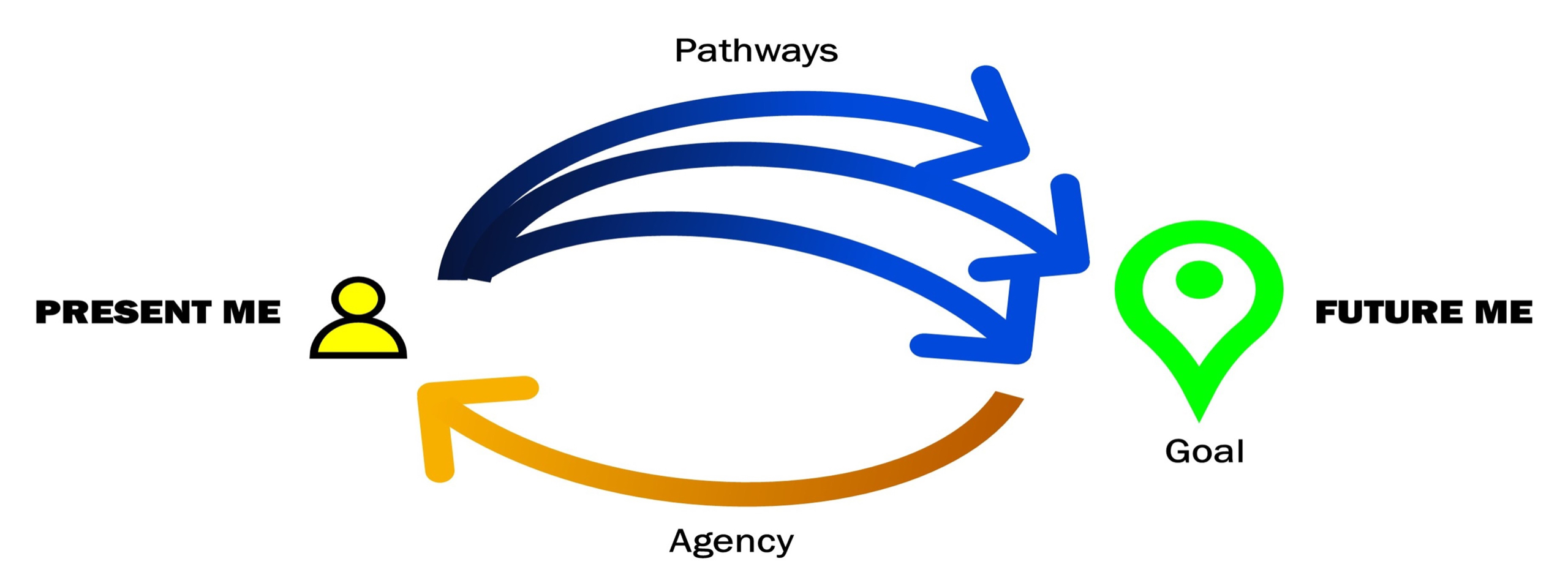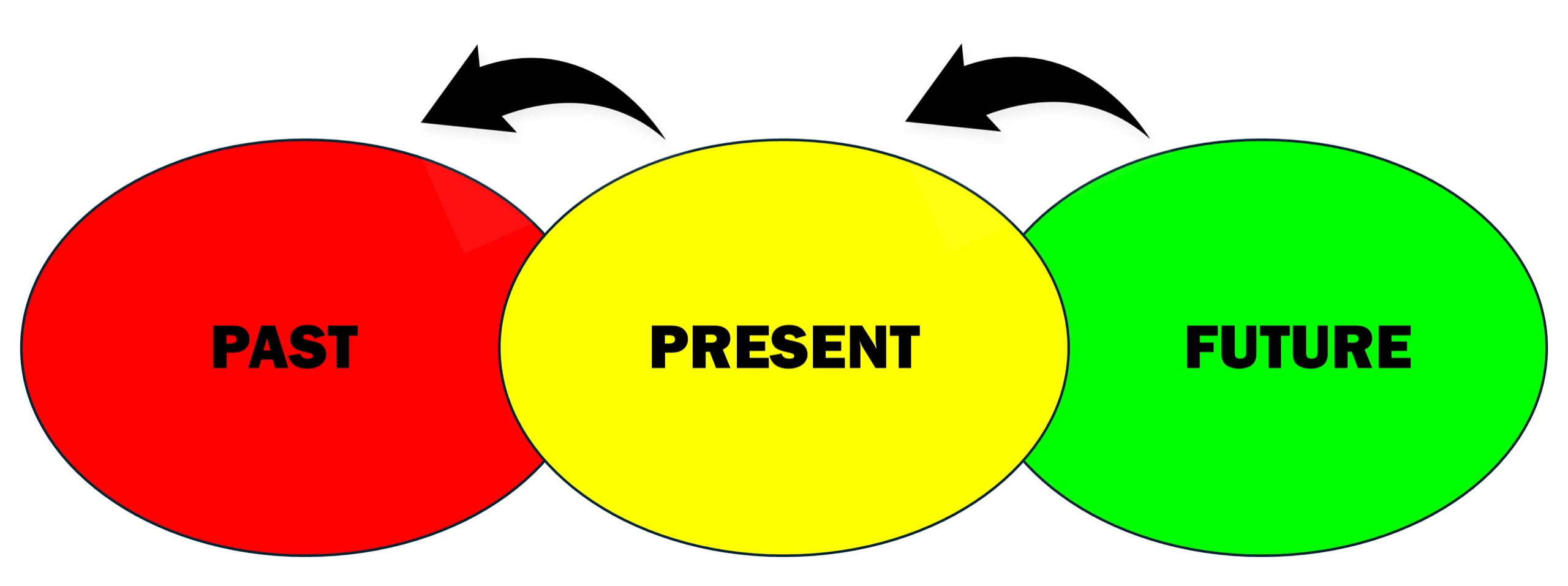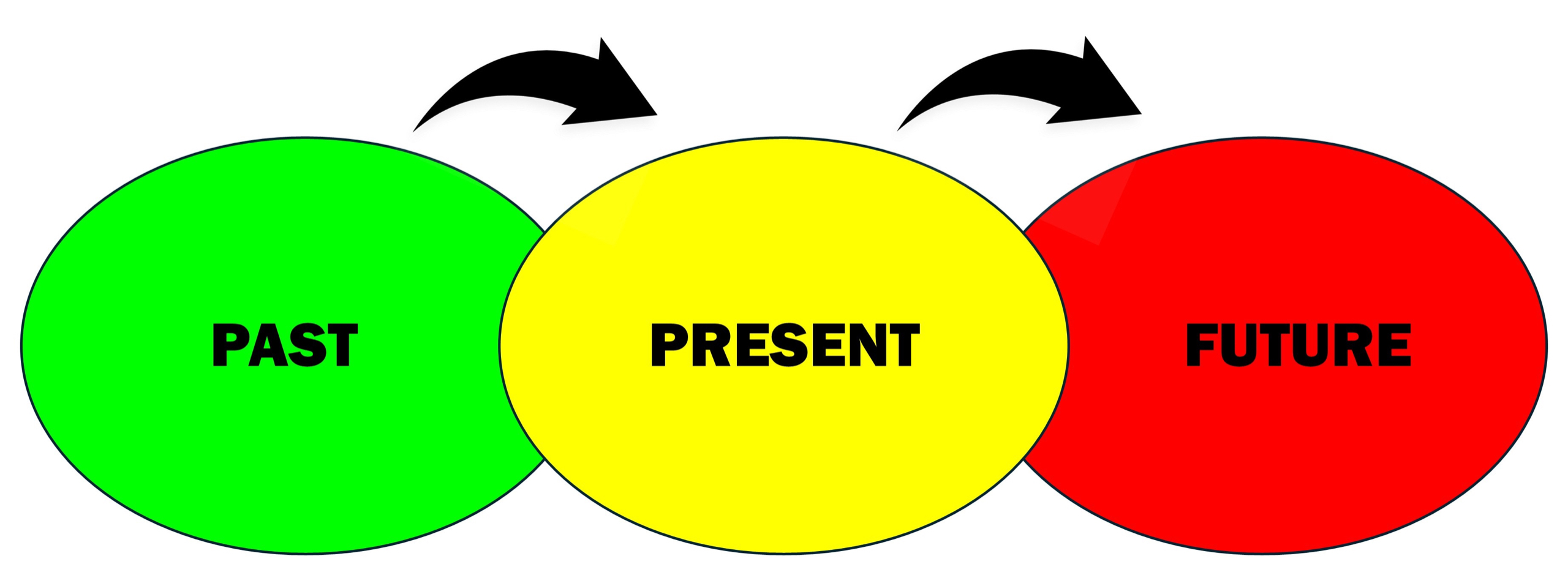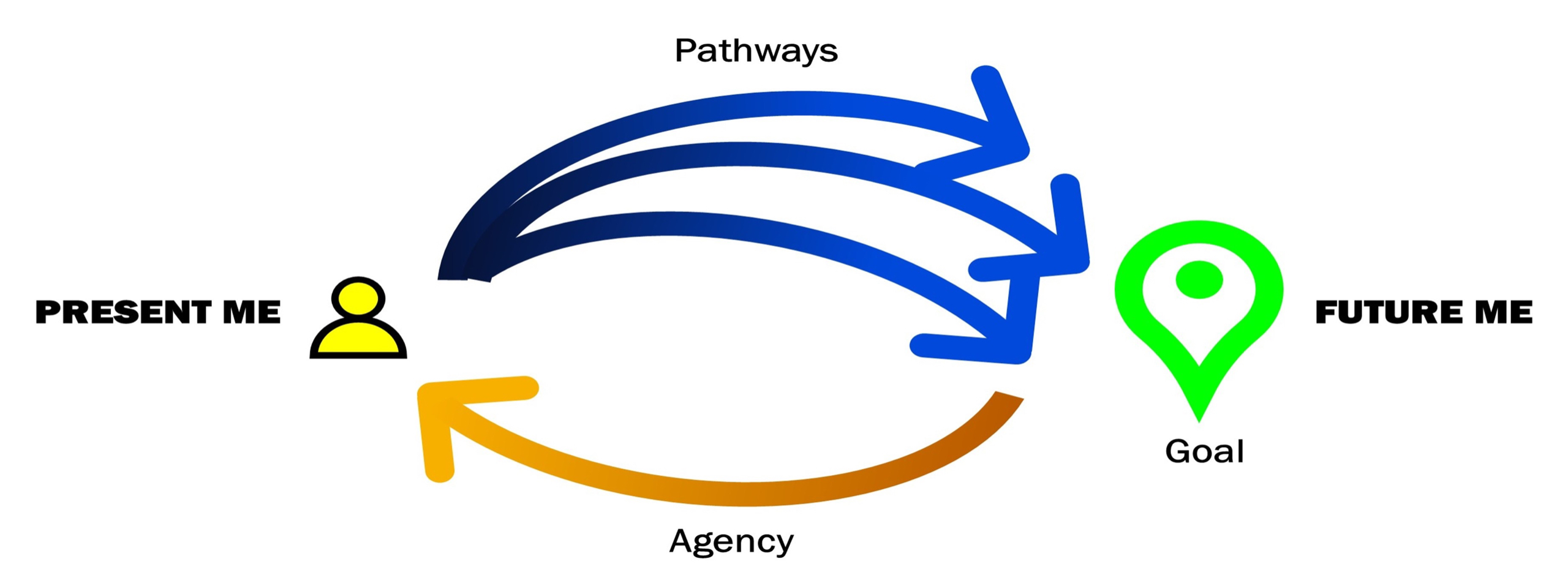
Future Me Thinking
Linear vs Holistic Time
The most common and ineffective linear model of time, which is pervasive in psychology but also how people commonly think of and approach time.
The image just above is a graphical representation of linear time. The core assumption of linear time is that the past determines the present and from there, the present determines the future.
Linear time is based on Newtonian physics. Another core assumption of linear time is that the time flows consistently and equitably. Those were the very words of Newton’s definition of time, which he published in his masterwork Mathematical Principles of Natural Philosophy, first published in 1687.
One of Newtons’ assumptions in regards to linear time was that, because time itself flows consistently, the events within time must also be consistent with each other. In other words, events in the present and future must be consistent with what happened in the past. The word must may sound strong here, but it’s not.
The past is where all of the power is, with this view and model of time. Dr. Brent Slife, a theoretical psychologist, explains that because linear time assumes consistency, change itself must always be incremental, never disruptive or discontinuous. All change moves from the past and present in a neat and orderly manner into the future. The past is the greatest predictor of the future.
Interestingly, modern research shows just how sweeping the adoption of these linear assumptions are in how people think about themselves. When people are asked to think about their future selves – even over a decade away – the common assumption people have is that their future self will be extremely similar to their present self. As the Harvard psychologist Dr. Daniel Gilbert stated, “ Human beings are works in progress that mistakenly think they are finished. “
An obvious problem with linear time is that it has no clear direction. Instead of having a future guiding what you do, you’re letting the past and present dictate the future. The arrow is always forward with linear time, which makes the future as a concept both weak and unknowable. The future is a byproduct, not a cause.
Take, for example, public education. The linear model of public education is that the student naturally passes from the first grade to the second and on up through high school. At each successive year, the student is given what are assumed to be important benchmarks for the succeeding years, without respect for what each student’s future will be.
As the billionare Peter Theil writes “By the time a student gets to college, he’s spent a decade curating a bewildering diverse resume to prepare for a completely unknowable future. Come what may, he’s ready – for nothing in particular.”
You can know if you are operating in linear model of time if you use your past and present as a basis for the future you are creating. You do this when you let your previous results and performance directly dictate the goals you pursue.
This is not utilizing time as a tool powerfully, though we will get into that more when explaining holistic time, which is more psychologically accurate and powerful than linear time.
Interestingly, linear time is taken for granted not as a way of viewing time, but for most people, it is viewed as the only way of viewing time. Outside of physics, the majority of scientific explanations assume linear time without question.
What is the Holistic Model of Time?
Most creatures live in the immediate present and their mental powers are entirely devoted to processing what is happening now. Human beings are different in that people are able to think explicitly about past and future events. Moreover, they use these thoughts about other times to guide their actions in the present. People think far more about the future than the past. Pragmatic prospection holds that people think about the future so as to guide actions to bring about desired outcomes.

By changing our goals, things that were once signal become noise. Our goals guide and direct our mind health filter which is also called selective attention. Selective attention is an extremely powerful cognitive and emotional skill. The capacity to select is a fundamental part of our agency intelligence, because to select means you’re not attending to 99 person of things you could select. The nothing of selection is a hallmark of truly high hope people because they know how to activate your agency intelligence on a regular basis.
Selective attention is the process by which you actively filter and find effective pathways to your goals.
So breaking down this idea of holistic time, we understand that:
-
Most living creatures are completely reactive to and absorbed by what is
occurring in the present moment.
-
Human beings are different because we have the cognitive intelligence to
reflect beyond the present moment, thinking about other things, particularly
about our own past and future.
-
Humans think about both the past and the future for the explicite purpose of
guiding and shaping their decisions in the present.
-
People spent far less time thinking about their past then they do thinking
about their future. We don’t typically think bout the past for it’s own sake,
but instead, we think about the past’s implications on the future.
-
Prospection is the term for thinking about one’s own future prospects or
potentials. As people, we spend huge amounts of time thinking about our future and then letting our prospects or goals dictate our course in the present.
-
The better we get at thinking about our own past and future – and more particularly our own future self – the better we live in the present.
-
Our future not only gives meaning, purpose and identity to our present, but it also guides our path and decisions. Said directly, the future dictates and guides the present. This is the exact opposite explanation to the linear approach most people have accepted.
-
Our goals act as the central part of our future or perspective in the present. Our goals determine what is relevant or signal and what is irrelevant or noise. Thus, our mindframe determines how we filter our experience.
-
Pathways thinking is a central aspect of learning and goal achievement, and it reflects one’s ability to both set meaningful goals and then effectively find our create new pathways to realize them.

All three dimensions of time, past, present and future – co-occur in the now. No one dimension of time can truly be a meaningful dimension with the context provided by the other two dimensions.
Knowing that time is holistic rather than sequential, this changes the weight or impact of each dimension of time. Rather than the past being the sole driving force, with holistic time that is no longer the case.
Yes, the past is useful information. Yes, it’s something you can reference and learn from. However, it’s not the guidepost for decisions and actions. It’s not the location or locus of control. It’s not the driver. It’s not pushing you around or forcing you in a particular direction.
Instead, the past is a tool for making better decisions in the present and not repeating errors of judgement. It’s something to learn from, not live to. Ultimately, with greater neuroscientific maturity, the past is something you actively frame yourself, in the present moment. Regardless of what happened – whether something tragice, a misunderstanding, or even a mistake on your own part – it’s your job to frame the meaning. Research shows that it take an internal, rather than an external past, as a tool, rather than blaming your past.
Unless you actively frame the meaning yourself, you’re likely to turn the past into the driver of your present experience. This throws you back into linear time, where the past dictates the present and the future. In linear time, you can not change very quickly or even realize impossible goals.
The past isn’t a concrete reality. The past is a neuroscience tool. Don’t place the past outside of yourself. The purpose of the past is to improve the present and the future.
Like the past, the future is a neuroscience tool – not an external reality.
As shown in the image below, what we call holistic time, the future is where the majority of the weight is. The future is the biggest factor in who you’re being and what you’re expecting right now. The future, not the past, is what causes and shapes what you see and what you do in the present. The neuroscience truth is that the future, more than the past, drives and shapes the present. Since the future heavily dictates the present, the primary aspect of a person’s mindframe or perception is their own goals. It’s our goals that determine what is the signal.



